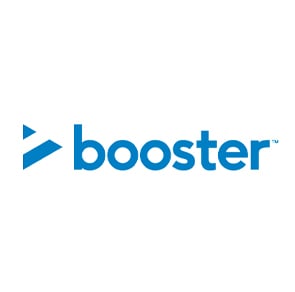While there’s no bulletproof way to ensure your data stays out of harm’s way, here are five simple steps you can take to help keep your online data safe and secure.
1. One password to rule them all
By now, you know that you should be creating long, strong passwords, preferably with a mix of numbers and special characters to protect your online accounts. But when you need a password for every single account, it gets too hard to think up new passwords all the time - let alone remember them all! Hands up if you tend to reuse the same passwords - or variations thereof - over and over? Yeah, thought so. Doing so can make you more vulnerable to an attack.
So, if you’re still using Letmein@123 across all your accounts, it’s probably time to update your password security. Here’s a few tips to improve your password game:
- Use a different password for every online account you use
- Make your password long and strong
- Don’t use personal information to create your passwords
- Never share your passwords
Password manager
One way around this is to use a password manager. This stores and manages your passwords for you. The password manager will be the only account you need to remember login details for. Just one password. Easy.
2. Use two-factor authentication (2FA)
Most online accounts ask you for your username and password to log into your account. This is also known as single-factor authentication. Adding two-factor authentication (2FA) to your login process is a simple way of adding an extra layer of security to your accounts. This makes it harder for an attacker to access your online account.
You can enable 2FA in the privacy settings of your online accounts. With 2FA, you need to provide two things - your password and something else - before you can access an account. The ‘something else’ can include:
- Passphrase
- Security questions
- Pin number
- Physical device (eg security token or fob)
- Temporary access code via text
- Fingerprint scans
- Voice recognition
Booster has 2FA enabled for mybooster accounts. It’s simple to set up and helps to ensure your data remains private to you.
3. Keep updating
Are you using the most up-to-date version of your browser? When was the last time you updated your software or phone apps? While it’s tempting to ignore those update reminders, telling yourself ‘you’ll do that later’ - installing updates is an important aspect of your online security.
Software updates aren’t just about getting the latest feature or fixing a bug, they are often about fixing weaknesses or a vulnerability that’s been found in the software. Hackers can use these vulnerabilities to gain access to your device and your information.
You can check which version of the Booster NZ app you’re using under Settings.
4. Be savvy with your online info
It’s really important to check that a web page is secure before you send any information through it. The easiest way to do this to check the URL.
A secure website’s URL will start with https://. It will also have a little padlock icon in the address bar. This means that any information you send through a website with an https address is encrypted. It’s not able to be read by anyone intercepting its path to the website.
Most banks and financial companies - like Booster - will never ask you for your password. If something doesn’t feel right about an email or phone call you’ve received, call the company back. It might be genuine, or it could be a phishing scam.
5. Have a good back up plan
It’s important to make sure your data is backed up regularly. If you lose your data for any reason, you can quickly replace it with a copy you made. Data loss can happen by a device being damaged, a cyber attack or a lost or stolen computer.
Here’s a few tips to set up a good back-up plan:
- Back up regularly
- Use a cloud backup system in conjunction with a physical option (eg hard drive or memory stick)
- Make sure backups are stored offline
- Routinely test your backup solutions
- Protect your backed up data with passwords
New Zealand’s cyber security organisation, cert.govt.nz, has some helpful guides and more information on improving your online security. Download their Top tips for cyber security checklist.

